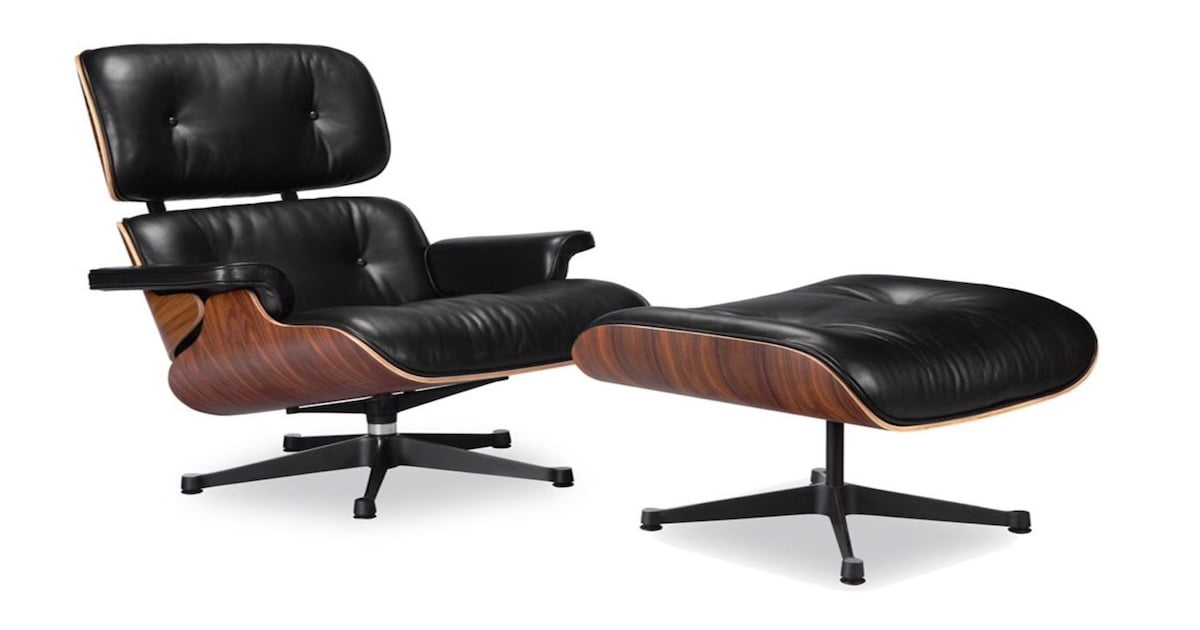It’s the time of year for saving money!
For most audiophiles, detailed and continued evaluation into components, cables and speakers are part of the ongoing ritual of any high performance system. Irrespective of cost, we want our systems to sound at their peak and continue to do so until they either wear out or we decide to upgrade to something new. Apart from that, paying some measure of attention to the room itself is probably second, although that possibly should be placed first. Probably coming in last place is the all-important part of any system, the spot where one places their backside – better known as the listening chair.
 Any high performance system placed in the family room, or the main area where people gather to watch television or movies, may limit the type and placement of the listening chair. Adherence to a particular décor may find an audiophile succumbing to something painfully uncomfortable. In a dedicated audio room, however, or any place in the house where some variety is possible, a good question to ask is “what’s in a chair?”
Any high performance system placed in the family room, or the main area where people gather to watch television or movies, may limit the type and placement of the listening chair. Adherence to a particular décor may find an audiophile succumbing to something painfully uncomfortable. In a dedicated audio room, however, or any place in the house where some variety is possible, a good question to ask is “what’s in a chair?”
I think first and foremost one needs to determine how listening will be conducted. Someone living alone, or at least listening predominately alone may only need one chair. Because many audiophiles actually do listen by themselves, this may happen more often than one might think. I had only one chair for the last two years but had others when friends came over. Only recently did I permanently add two additional chairs. However, I have folding chairs to allow me to seat as many as twelve.
If there is room, a three or four seat couch might be used. For my own tastes, I always prefer individual chairs. If a single seat chair is used, it needs to be comfortable. It would be wise to purchase a higher quality chair, one that will remain comfortable for hours of use at a time and will last for multiple years. I can’t think of a better way to ruin a listening session than continually squirming around in an inexpensive, poorly constructed, uncomfortable chair. Spending thousands, tens of thousands or more dollars on an audio system should not be negated because of a cheap, hard, painful chair.
 Another consideration, although it may not matter to some, is the style of the chair. If the home is very traditional then using a Barcelona Chair might not make sense. Or the converse, using an Queen Anne wing back when the rest of the home is an ultra-modern design will look out of place. To some, style and decor will matter, to others, they won’t even care.
Another consideration, although it may not matter to some, is the style of the chair. If the home is very traditional then using a Barcelona Chair might not make sense. Or the converse, using an Queen Anne wing back when the rest of the home is an ultra-modern design will look out of place. To some, style and decor will matter, to others, they won’t even care.
One popular type of chair is the big, comfy recliner – powered foot rest, power recline, cup holders and maybe even some sort of swing out tray. They can be very appealing. I see the one problem with a recliner is maintaining consistent measured distance from the speakers when the chair is in the forward position as opposed to reclining. If that is of no concern, and to many it will not be, a big leather recliner is a fantastic listening chair.
Once the chair has been decided upon, the next issue is where it should be placed. Because, if you think speaker placement alone matters, you will be delighted to learn that placement of the chair relative to the speakers is directly proportional to the quality of soundstage, imaging and bass response the system delivers.
In fact, positioning the speakers should never take place without concurrent adjustment of the listening chair. Oddly enough, there are countless methodologies available with an Internet search to find out about speaker placement. Many of them work and some are a waste of time. Few, if any of them discuss where to place the chair in addition to positioning the speakers.
 It is quite common and widely accepted to start with an equilateral triangle formed between the two speakers and the chair. So if the distance between the left and right speaker is ten feet, the distance from each speaker to the chair is ten feet. This is a good starting point because for many homes, some adjustment must be made depending on the room. It may be a well-worn saying but “play the system, hear the room” is always sage advice.
It is quite common and widely accepted to start with an equilateral triangle formed between the two speakers and the chair. So if the distance between the left and right speaker is ten feet, the distance from each speaker to the chair is ten feet. This is a good starting point because for many homes, some adjustment must be made depending on the room. It may be a well-worn saying but “play the system, hear the room” is always sage advice.
It is generally accepted to position the two speakers a distance somewhere between 80% and 100% of the distance from each speaker to the chair. So, if the measurement from the chair to each speaker is ten feet, the two speakers should be somewhere between eight and ten feet apart. This is, of course, conditional on the room and is best evaluated by that time honored practice – listening. Use well known music to evaluate where speakers sound better, worse and finally best. This is typically painstaking and time consuming.
When talking about measurements, we measure to what exactly? For my own use, I typically place a laser measurer on the chair back and point the laser at a spot right above the tweeter on each speaker. I also measure the distance to each side wall to be sure they match. It is also easily acceptable to use a tape measure and a friend to measure from the listener to the tweeter. Lastly, chair height is also important. Ideally, the tweeter and the listener’s ears should be at the same height. And as with the speakers, it is probably not uncommon to move the chair an inch or so in any one direction based on listening.
 Having a comfortable chair to conduct a listening session placed correctly in relation to the speakers will heighten the musical experience. It can transform an average listening session into a breathtaking one. Use of a proper chair in the correct place is, unfortunately, often overlooked or cannot be helped. When the chair is right, it can take the sonic quality to new heights. So, don’t forget to consider the chair. It’s where you will spend most all your time with your system.
Having a comfortable chair to conduct a listening session placed correctly in relation to the speakers will heighten the musical experience. It can transform an average listening session into a breathtaking one. Use of a proper chair in the correct place is, unfortunately, often overlooked or cannot be helped. When the chair is right, it can take the sonic quality to new heights. So, don’t forget to consider the chair. It’s where you will spend most all your time with your system.







